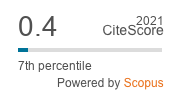Effect of alternate food sources on biological parameters of Stethorus pauperculus Weise (Coleoptera: Coccinellidae)
DOI:
https://doi.org/10.33307/entomon.v40i2.71Keywords:
Stethorus pauperculus, alternate food sources, biological parametersAbstract
The effect of different alternate food sources on survival, mating frequency, fecundity and egg hatchability of Stethorus pauperculus was tested under laboratory conditions. None of the alternative hosts was able to maintain fertility of the female S. pauperculus, except the primary hosts which included two spotted red spider mite (Tetranychus urticae Koch), sorghum mite (Oligonychus indicus (Hirst)) and yellow mite (Polyphagotarsonemus latus (Banks)). Although some eggs were laid when S. pauperculus was supplied with pollen and honey mixture, they did not hatch. The most effective food source for maintaining adult longevity was T. urticae (39.30±1.08 days), followed by sorghum mite, O. indicus (29.75±0.67 days) and yellow mite (25.25±0.78 days).
Downloads
Published
How to Cite
Issue
Section
License
Copyright (c) 2015 ENTOMON

This work is licensed under a Creative Commons Attribution-ShareAlike 4.0 International License.


